A New Year filled with nostalgia
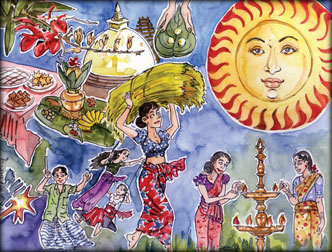 By Kalakeerthi Edwin Ariyadasa By Kalakeerthi Edwin Ariyadasa
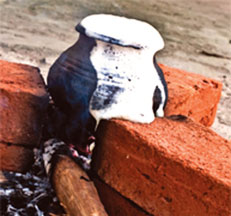 “April is the cruellest month, breeding “April is the cruellest month, breeding
Lilacs out of the dead land, mixing
Memory and desire, stirring
Dull roots with spring rain.”
- T.S. Eliot, The Waste Land
In temperate climes, the arrival of April heralds the dawn of
renewal, after the earth had been etherised and shrouded in wintry
gloom. Numerous are the poets, who have lyrically gushed at the joy that
spring brings, freshening the world and awakening it into living
vitality.
But, the master poet and aesthetic rebel T.S. Eliot, in The Waste
Land - his epic elegy on human hopelessness – laments the emergence of
this most felicitous April, characterising it as the “cruellest month”.
Private logic
The intense private logic of the poet’s heart dictates the ‘reason’
for his spirited denunciation of April. This fresh April sharpens the
poet’s keen lyrical memories of those heightened joys of his youthful
Aprils. The deep pangs of nostalgically recalled youthful Aprils are
brought on by this new April. That explains why “April is the cruellest
month” for the poet.
The Sinhala and Tamil New Year too is in April. For those ageing and
aged personalities too, who cosily cherish the warm and intimate
memories of New Year joys that are long past, April could prove “the
cruellest month”.
Nostalgia can inflict deep pains on those individuals, because only
they can recall the untrammelled joys of those past Sinhala and Tamil
New Years. Those New Year festivities seamlessly fused with the natural
way of life of those old rural folk. They were not a series of ‘joys’,
artificially foisted upon the people by outsiders who are aliens to the
indigenous way of life. The New Year rites and rituals were part and
parcel of their existence – the continuing rhythm of their way of life.
First New Year
For me, an aged individual, the current New Year is my 90th. (I was
born in December 1922. Therefore, my first New Year was in 1923.
Incidentally T.S. Eliot’s The Waste Land appeared in 1922).
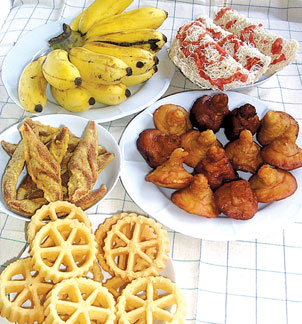 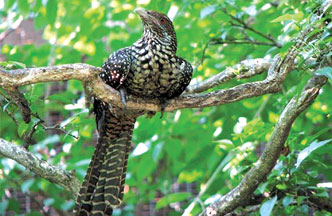 I hold memories of more than 80 Sinhala New Years. Some of those
early memories have now faded away, leaving only stray traces. I hold memories of more than 80 Sinhala New Years. Some of those
early memories have now faded away, leaving only stray traces.
When we were young, we kept a countdown to the New Year. Schools were
closed for the holiday. The adults in the family were busy with the
preparations, to greet the New Year. Each family observed the New Year
as befits its circumstances.
The deep scarlet blossoms of the Erabadu tree proclaimed that the New
Year was drawing closer. For us, in our childhood, the deep red buds of
Erabadu were not just part of a popular lyric as they are to most people
today. They were starkly real. In a hedge right in front of our house,
there was a huge Erabadu tree. That seasonally erupted with a profuse
array of blossoms. This memorable tree, along with many other symbols of
New Year, are now gone.
Fire crackers
When we as children visited houses prior to the New Year, we quite
often received neatly packeted fire crackers. They came wrapped in
deep-red paper and, I believe, were imported from China. We collected
these for the New Year day. I used to have a neat little stack of these
fire cracker boxes, awaiting the arrival of the New Year.
Most of the sweetmeats and the major food items for the New Year meal
were prepared at home. To make the Kevum - the rice-cake with the knot
at the top – a considerable deftness was called for. The process of
getting all the ingredients ready was almost a sacred ritual. The wok
containing the oil was placed on the hearth at an auspicious moment.
A special Kevum was hung by a string, for the fruit-flies. This
traditionally-dictated stratagem prevented those troublesome little
insects becoming a nuisance to the people at home.
In our time, days ahead of the event, an astrologer would bring a
leaflet, indicating the hours of the New Year rituals. This printed note
was called Avurudu Seettuwa (New Year note). The temples announced the
auspicious hours with the peals of temple bells. Today, the electronic
media has assumed this role in most instances. There could very well be
certain remote areas in the country where the traditional temple bells
have still not been replaced by the electronic media.
Rituals
The New Year rituals had two clearly demarcated segments – the Old
Year and the New Year. A highly significant area in the Old New Year,
is, of course, the Nonagathe (no auspicious times). During this period,
people do not partake of meals. This is a form of complete fasting. The
domestic hearth is not kindled. No transactions are entered into. All
normal activities are in abeyance.
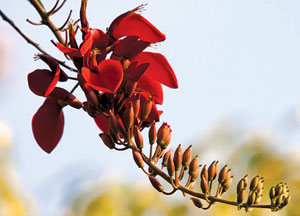 It is worthwhile noting that this is the survival of an age-old
practice. In very ancient times, man led a life in terms of the dictates
of nature. It is worthwhile noting that this is the survival of an age-old
practice. In very ancient times, man led a life in terms of the dictates
of nature.
In summer, nature flourishes. Trees flower and bear fruit. Streams
and rivers flow along. Birds flit around, warbling. Food is plentiful
for man and beast.
Disturbing signs
When autumn comes, some disturbing signs occur. Unleaving of the
trees is an irksome sign. Eventually, they wither. Winter arrives,
smothering life. Trees, plants, flowers and fruit are gone. Birds are no
longer on the wing. Rivers and streams are silent. Man is
sorrow-stricken. The God of Nature has died. Man laments.
Eventually, spring comes, renewing life. The men who lamented now
rejoice at the re-birth of the God of Nature.
In most New Year festivals of mankind, these two segments are vividly
present.
In a remote village in Ireland – an anthropologist noted – to
symbolise the loss of the vigour of nature, the women-folk of the
community tie-up vigorous young men in ropes. Mercifully they are
quickly untied.
In the Sinhala New Year, this hour is spent in performing religious
rites.
When the New Year dawns, a fresh cycle of life is initiated.
Natural vi`brance
The intimate rituals of the Sinhala New Year, that flourished with a
natural vibrance, as an integral part of our cultural heritage, are now
almost fully gone. However, we must be grateful to the media and
commercial interests, that keep the New Year rituals alive, in an
admirable effort.
The living Erabadu visual and the melodious soundtrack of the cuckoo
are now transferred to digital graphics.
However, even today, the whole community is brought together to
perform major New Year rituals collectively and in wholesome unison, at
a pre-ordained moment.
A fresh effort has to be made to preserve the vanishing rites and
rituals of the Sinhala New Year which give us a noble identity,
providing us with a legacy that we can claim as our own. |


